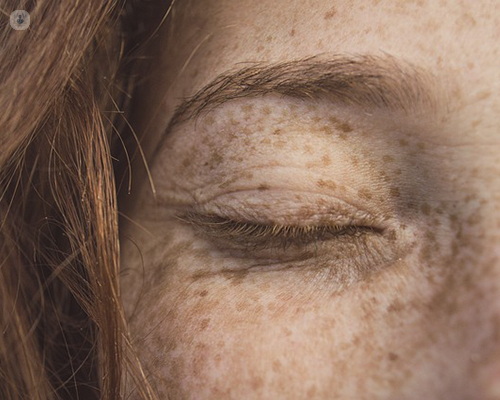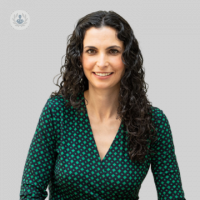Skin cancer: The journey from detection to diagnosis and onwards
Written by:In this expert guide to skin cancer diagnosis, highly respected consultant dermatologist Dr Cristina Rodriguez-Garcia gives insight on the patient journey from their first consultation to diagnosis and treatment for the disease. The leading specialist also offers invaluable advice on how patients who have recovered from skin cancer should continue to monitor their skin health and reduce risks of recurrence.

What initial tests are performed when skin cancer is suspected?
When the patient comes to the clinic initially, the suspicious lesion is examined with a dermatosocpe which can give more information about the lesion. If there are any signs that indicate the lesion could be cancerous, it is biopsied or removed for histological diagnosis. This allows pathologists to examine the sampled cells closely in order to say definitively if cancer is present and if so, diagnose the specific type of skin cancer.
How is the developmental stage of skin cancer determined?
The process to determine the developmental stage of the cancer depends on the subtype of skin cancer. There are two main types of skin cancer: melanoma and non-melanoma, which develop in different layers of the skin.
In cases of melanoma, the thickness and depth of the lesion within the skin signifies the developmental stage of the cancer. Examining this is one way to find out if the melanoma is of an early or more advanced stage.
If the lesion is found to be deep in the skin, the patient may need to undergo a sentinel lymph node biopsy to analyse if the disease has spread to the regional lymph nodes. In some cases, the patient may also need to have a CT scan to check if there is any further spreading of the cancer. If the melanoma is caught early, however, we can make these assessments based on their biopsy alone.
The depth of the lesion can also be used to assess the development of non-melanoma skin cancer but tests are also made to determine if the cancer has reached the skin’s nerves and blood vessels. When this is indicated, this suggests that the cancer is behaving aggressively and so the patient would be classified as higher risk. Depending on the location of the cancer on the body, a patient may also be classed as higher risk as in some areas there is a greater likelihood of the cancer spreading.
What happens when a skin cancer diagnosis is made?
After a skin cancer diagnosis, the doctor should explain which type of skin cancer is present as well as the prognosis which varies depending on the subtype. Some patients may need to have additional tissue removed (known as a re-excision) to make sure that no cancerous cells have been left behind.
In some cases, the lymph nodes need to be analysed or further scans need to be performed to check if the cancer has spread to other areas of the body. Going forward, patients with skin cancer additionally need to attend follow up appointments for skin and lymph node checks depending on the subtype and aggressiveness of their skin cancer. Certain skin cancers may also be treated with radiotherapy or chemotherapy after the removal of the lesion if the cancer has spread.
What is the most crucial piece of advice you give to patients?
My most important piece of advice is for patients is that they should examine their skin regularly at home. I usually recommend that my patients perform a self-check once a month so that they are familiar with how their skin looks and what moles they have. This helps them to detect any changes, new or non-healing lesions or growth or changes to a mole. I also recommend that they see a specialist for regular skin checks, especially if they are concerned about lesion that is changing or new.
I also recommend that patients protect themselves from the sun very carefully because they have an increased risk of developing other skin cancers in the future. Therefore, they need to be vigilant and try to reduce their risks wherever possible.
If you are worried about changes to a mole or a new skin lesion, don’t hesitate to book a consultation with Dr Cristina Rodriguez-Garcia by visiting her Top Doctors profile.


